A strong back is a healthy back, and one of the best exercises for this critical body part is back extensions. But what if you don’t have access to a back-extension machine? The good news is that there are plenty of equally effective exercises you can do instead.
If you’ve got access to a 45-degree back extension machine, you have everything you need to develop a strong and healthy lower back. These machines are both comfortable and easy to use and, used correctly, are also very safe.
You can do back extensions, also called hyperextensions, with or without weights, and even use resistance bands to make them more demanding. It’s also possible to do them using one leg at a time, which increases glute and hamstring recruitment.

But, what if your gym doesn’t have a back extension machine, or you don’t have space for one in your home or garage gym?
Thankfully, there are plenty of alternatives to this popular exercise.
The 12 Best Back Extension Alternatives You Should Consider
The best back extension alternatives involve similar movements but require different training equipment. Others work the same muscles but in a slightly different way. Whether you train at home or in a commercial gym, you can use these exercises to strengthen your lower back.
1. Good mornings
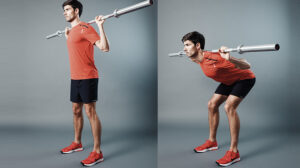
Good mornings are a slightly controversial exercise. That’s because, when done incorrectly, they could cause serious injury. This criticism is not unique to good mornings, but the position of the load means you’ll have to work extra hard to maintain a neutral (slightly arched) spine.
Providing you do that, good mornings are not really any riskier than back extensions or any other lower back exercise.
And why are good mornings so-called? It’s because they look like you are greeting someone by bowing.
Good mornings can be done using a barbell or a resistance band as preferred. You can also perform this exercise using a Smith machine.
2. Romanian Deadlift

Rumor has it that Romanian deadlifts are so-called because Romanian Olympic weightlifters used them in their training. Whether this is true or not, one thing we know for sure is that this lift is a great way to strengthen the lower back, glutes, and hamstrings.
While it is similar to good mornings, it’s a little more lower back-friendly, which is good news if you suffer from lower back pain. However, you should still avoid rounding your lower back to ensure this exercise is as safe as possible.
3. Reverse Hyperextensions
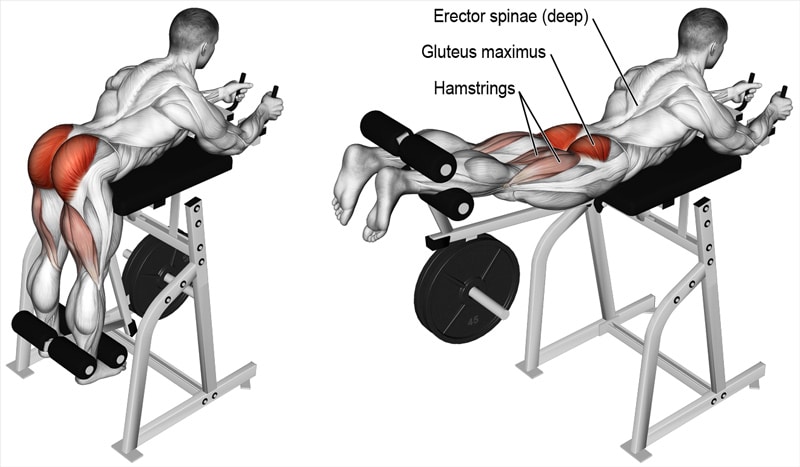
When you do regular back extensions, your feet remain stationary while your upper body moves. With reverse hypers, the opposite is true; your legs move while your upper body stays still.
Reverse hypers are a popular accessory exercise with powerlifters. They allow you to lift moderate to heavy weights with very little stress on your lumbar spine.
The most straightforward way to do reverse hyperextensions is with a dedicated machine. Still, you can also do a version of this exercise using a flat bench and even a stability ball.
4. Snatch Grip Deadlifts
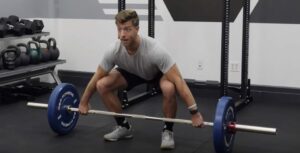
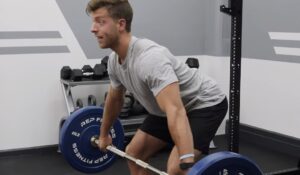
All deadlift variations work your lower back, glutes, and hamstrings. In fact, if you deadlift regularly, you may not even need to do 45-degree back extensions. You’ll have worked these muscles hard enough.
That said, the snatch grip is arguably the best alternative to 45-degree back extensions. Using a wider than normal grip means your range of motion is bigger than usual, and that increases lower back recruitment.
Be warned, this exercise requires good flexibility and mobility. The increased range of motion should come from your hips and not by rounding your lower back.
5. Cable Pull-Through

The cable pull-through is a variation of the Romanian deadlift (exercise #2) but, instead of using a barbell or dumbbells, you use a low cable machine fitted with a rope handle.
This makes it a little more lower back-friendly, although it’s still an effective lower back, glute, and hamstring exercise. In fact, if you analyze the movement, you’ll quickly see that this exercise is very similar to 45-degree back extensions.
The main advantage of this exercise is that you can easily increase or decrease the resistance, making it a good move for beginner, intermediate, and advanced lifters.
6. Barbell Hip Thrusts
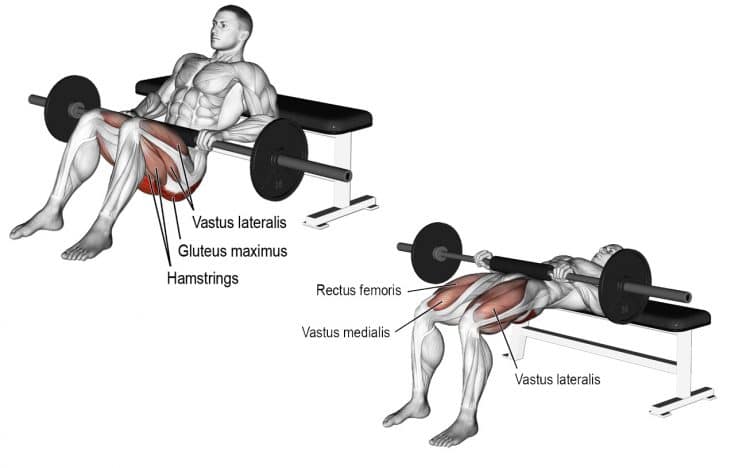
Barbell hip thrusts are usually seen as a glute exercise. However, the truth is that they work your entire posterior chain, including your lower back. The main advantage of this exercise over other back extension variations is that it doesn’t put much pressure on your lumbar spine, so it’s relatively lower back-friendly, even if you use heavyweights.
While this exercise IS usually done using a barbell, you can also do it with a weight plate or dumbbell resting on your hips, or just use your body weight for resistance. You can also do it without a bench and while lying on the floor, making it an ideal home workout exercise. This variation is called a glute bridge.
7. Flat Bench Hyperextensions
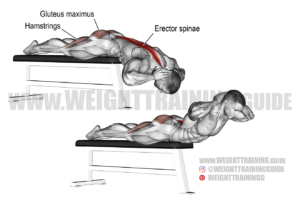
Don’t let lack of access to a 45-degree back extension machine prevent you from doing this tremendous posterior chain exercise. You can also do it on a standard flat gym bench. You’ll need a partner to sit on or hold your legs down, but other than that, this variation is very similar.
8. Superman

The superman is so-called because when you do this exercise, you look a little like the Man of Steel flying through the air. This is a bodyweight-only exercise, so it’s ideal for home workouts.
Take care when doing the superman not to lift your legs or upper body too high off the ground. Doing so hyperextends your lumbar spine, which could result in injury. You may also find this exercise more comfortable if you place a folded gym mat or cushion under your hips.
9. Kettlebell swing
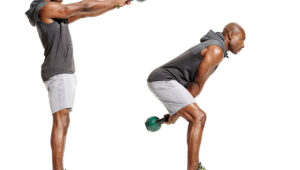
Like most lower back exercises, including 45-degree back extensions, kettlebell swings involve a pronounced hip hinge. It’s this hip hinge that makes these exercises such effective lower back builders.
As you lean forward from your hips, you must use your lower back muscles to stop your lumbar spine from rounding. The muscles work statically in what is properly called an isometric contraction.
Kettlebell swings can be done using a lightweight for high reps, a heavyweight for low reps, or a moderate weight for medium reps. Either way, this is a very effective back extension alternative that also works your glutes and hamstrings.
10. Barbell Rack Pulls
Barbell rack pulls are a type of deadlift. However, instead of lifting the weight from the floor, each rep starts with the bar resting on either blocks or the safety bars of a squat cage. The bar can be raised anywhere from just below knee-height to mid-thigh level.
With barbell rack pulls, the emphasis is on your lower back, making them a suitable alternative to 45-degree back extensions. In addition, rack pulls allow you to lift more weight than with regular deadlifts, so they’re a useful deadlift assistance exercise. Finally, regular heavy rack pulls will also increase your grip strength.
11. Glute-Ham Raise
The glute-ham raise is an advanced back extension alternative. It works your lower back in much the same way but then adds an extra leg curl movement to increase the difficulty. This is a popular exercise with powerlifters and weightlifters and also features in some CrossFit workouts. It’s a very beneficial exercise!
You’ll need a glute-ham raise machine to do this exercise, but there are alternatives. Check out the video below to learn how to do this challenging but rewarding exercise.
12. Kneeling Hip Extension
This exercise should not be confused with Nordic curls – it’s quite different. With the Nordic curl, the hips remain mostly stationary. With the kneeling hip extension, there is much more hip movement. This means the kneeling hip extension not only works your glutes and hamstrings but your lower back too.
How to do it:
- Kneel on the floor, so your thighs are perpendicular to the floor. Cross your arms over your chest.
- Sit back on your heels and simultaneously hinge forward from your hips. Lean over as far as you can without rounding your back or falling forward.
- Push your hips forward and return to the upright position.
- If you have a large upper body, you may need to anchor your feet to do this exercise. Anchoring your feet increases hamstring recruitment.
Wrapping Up
If you do a lot of squats, deadlifts, and bent-over rows, you probably have a strong lower back already. However, if this critical body part lags behind your other muscles, adding back extensions to your workouts will undoubtedly help.
If you don’t have access to a 45-degree back extension machine or need some different exercises to keep your workouts fresh and interesting, use these back-extension alternatives instead. Each one is tried, tested, and every bit as effective.
Remember, a chain is only as strong as its weakest link. An underdeveloped lower back can lead to injury, so make sure you keep yours strong.
For More News And Daily Updates, Follow IFBNewsfeed.Org on Facebook, Twitter, and Instagram. Comment, Like, And Share With Everyone Who May Need To Be Updated With The Most Recent Fitness/Bodybuilding/Powerlifting And CrossFit News.






